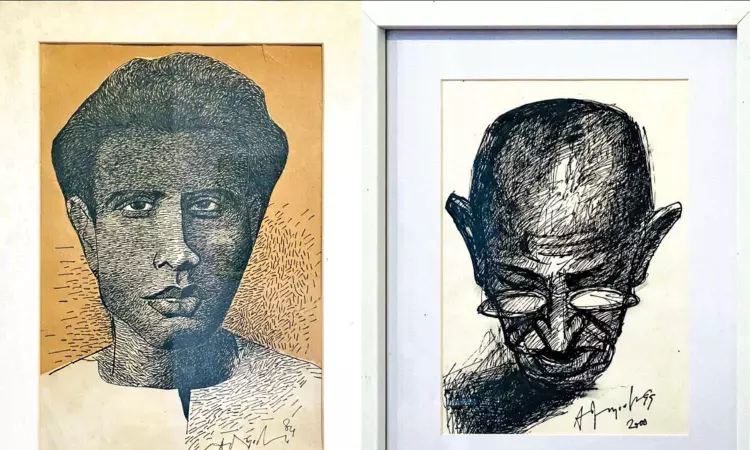An art tribute to teachers of Madras School of Art
Established in 1850 by Scottish surgeon Alexander Hunter, the Madras School of Art is the oldest surviving colonial art school.

Works by Adimoolam
CHENNAI: The exhibition titled ‘Teachers and Students’ showcases the works of three iconic teachers from the Madras School of Art – AP Santhanaraj, S Dhanapal, and L Munuswamy. Each of these teachers has left an indelible mark on the art world with their unique styles and contributions. Santhanaraj, known for his spontaneous free-line technique, continues to be celebrated for his artistic flair.
Dhanapal, on the other hand, is recognised for bridging the gap between traditional Eastern and the ever-evolving Western aesthetic sensibilities, serving as a visual link between the two. Munuswamy, revered for his ability to blend fantasy and realism, has captured the imagination of art enthusiasts. “The exhibition features the works of 22 artists spanning from the immediate post-Independence era to the present day. Rather than aiming for an encyclopedic approach, the intention is to provide a glimpse into the trajectory of the ‘Madras Metaphor’ - a term coined by Joseph James to encapsulate the historical, social, philosophical, and technical influences that have shaped this distinct visual universe. While this exhibition focuses on these select artists, there are numerous other teachers and students who have contributed to the Madras School of Art’s legacy, and their stories will be explored in upcoming showcases,” brief the curators.
Established in 1850 by Scottish surgeon Alexander Hunter, the Madras School of Art is the oldest surviving colonial art school. Over the years, alumni have fondly shared their experiences of nurturing relationships with their teachers. Even within the complex dynamics between the colonial state and its subjects, the school seems to have fostered a multilayered dialogue.
Today, the question of how an educational institution can foster creativity remains as important as ever. How can such spaces encourage artistic expression without taking risks themselves? Perhaps the answer lies in nurturing cultural citizenship among the public. This exhibition is made possible through the contribution of pieces on loan from private collectors and galleries, in addition to those from DakshinaChitra’s collection. The exhibition will be open for public viewing until July 19 at the Varija Art Gallery, DakshinaChitra.



